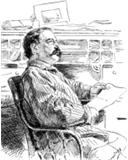
| The |  |
Papers |
|---|
How can The Samuel Gompers Papers introduce students to the real work of history? Well, what’s more fun than reading someone else’s mail? Or discovering the frank and often heated back-and-forth debate that went into policy decisions? Students might be surprised to see women fighting for their rights in male-dominated industries or newsboys younger than themselves battling to build a national union. And they might be intrigued to watch history unfold through the pages of primary documents. When students can follow the frantic telegrams that told the story of the Ludlow Massacre, when they can see for themselves why some workers worshiped Eugene Debs and others dismissed him as a “rainbow chaser,” when they can hear coal miners describe how the company store cheated them out their wages, or see for themselves why building trades and railroad workers fought so hard for safe working conditions, and when they can follow eye-witness accounts of the violence that shaped industrial relations in the days when labor had no legal right to organize, they get a taste of social history that just might whet their appetite for more.
Just think what a skillful teacher could do with the documents that comprise Volume 10, which follows Gompers through the years of the First World War. There's correspondence from European labor leaders that sheds light on the situation abroad. There are vehement war-related arguments within the labor movement that provide otherwise elusive evidence of regional, ethnic and political differences over the question of military service, the meaning of patriotism, and the value of international ties. Students can hear the voices of socialist opponents, Wobbly free speech advocates, and fiercely anti-war immigrants on the Lower East Side. And they can follow Gompers' struggle with his pacifist past, his controversial efforts to make the best deal he could for American workers, his visits to the warfront, and his efforts to mollify mothers desperate to keep their sons out of the fight and to protect German-American workers unfairly accused of treason. The fact that Gompers lost his youngest child and only daughter to the influenza pandemic in 1918, while he was in Europe on the government's behalf, adds a highly personal dimension to this wide-ranging account of the war experience.
The Samuel Gompers Papers takes all the stress out of using primary documents: We have identified every individual, organization, and episode that comes up in a document. There are about fifteen hundred footnotes per volume that provide essential historical details – thumbnail sketches of strikes, court cases, or legislative histories; short biographies of organizers, local politicians, government personnel, employers, and reformers. Our subjects are not usually found in encyclopedias or standard reference works. Instead they are tucked away in obscure footnotes, local newspapers, government reports, union proceedings, and trade journals, sources that are rarely indexed. So at the Gompers Papers project we've really refined the art of finding a needle in a haystack.
The primary documents we offer in the eleven volumes we have published so far are readily accessible to a broad range of students – even non-history majors can use our books to write first-rate research papers on questions like the impact of immigration, the evolution of anti-communism, the homefront during the First World War, the industrial impact of prohibition, the role of politics in the labor movement, among other subjects, without ever leaving the library. And those with deeper interests are always welcome to delve into our vast collection of research materials, including our annotation notes, our vertical file of documents collected from other repositories, and our extensive collection of photographs. We've helped high school students with History Day projects, labor educators trying to explain the rise and fall of the Industrial Workers of the World or the history of Labor Day, and film makers tracing the evolution of socialism, working-class New York , and the dangerous job of electrical work. Anthony J. Lucas turned to us early on in his research for his best-selling book Big Trouble, and so did Michael Kazin when he was working on The Populist Persuasion.
Conventional wisdom tells us that working-class voices and grass-roots activists are almost impossible to find. But as we at the Samuel Gompers Papers project have learned over time, it all depends on where you look . Samuel Gompers, and the individuals and groups with whom he corresponded, argued, assisted, or fought, all have something important to say about life, and work, and the on-going effort to achieve social justice in industrializing America. At the Gompers Papers we're doing our part to see that those voices are preserved and accessible – But we will need the help of the teaching profession to insure that those voices are heard.
Labor History
SG Biography
SG Quotations
AFL
Knights of Labor
IWW
Time Line
The SG Papers
The Project
Book Edition
Documents
Microfilm Edition
To Order
Research Tools
Bibliography
Index to Volumes
Micro Reel Lists
Subject Guides
Labor Links
Glossary
Contact Us
Home
WEB Accessibility